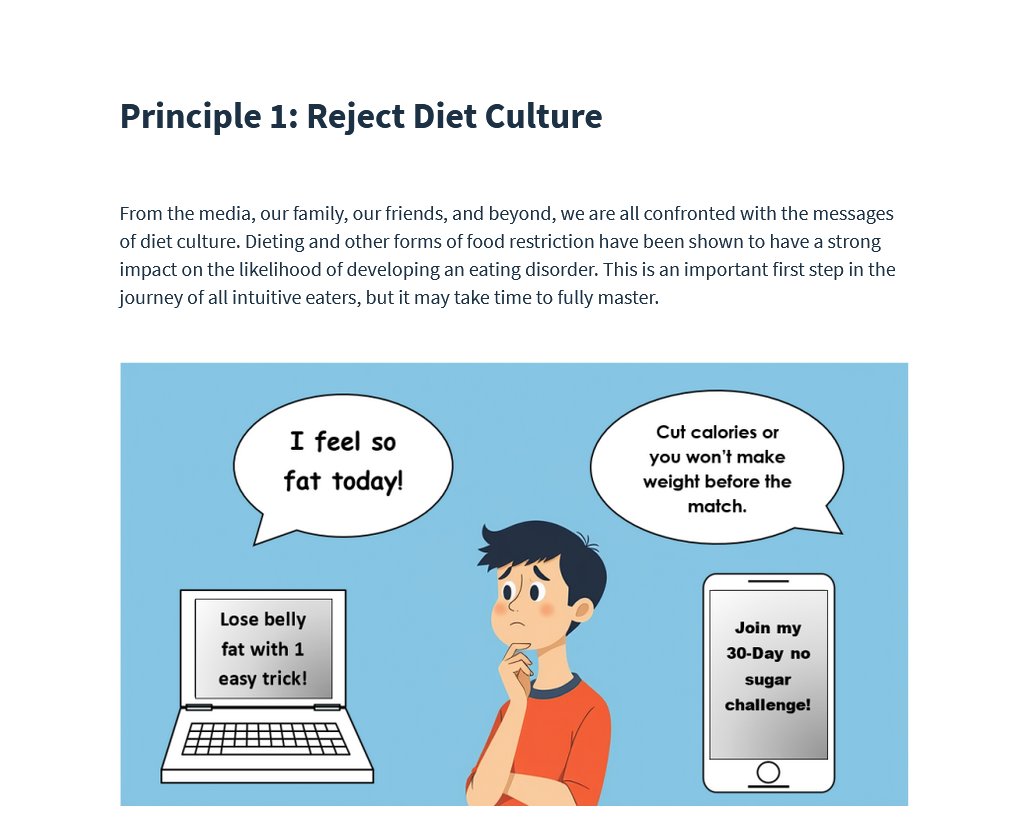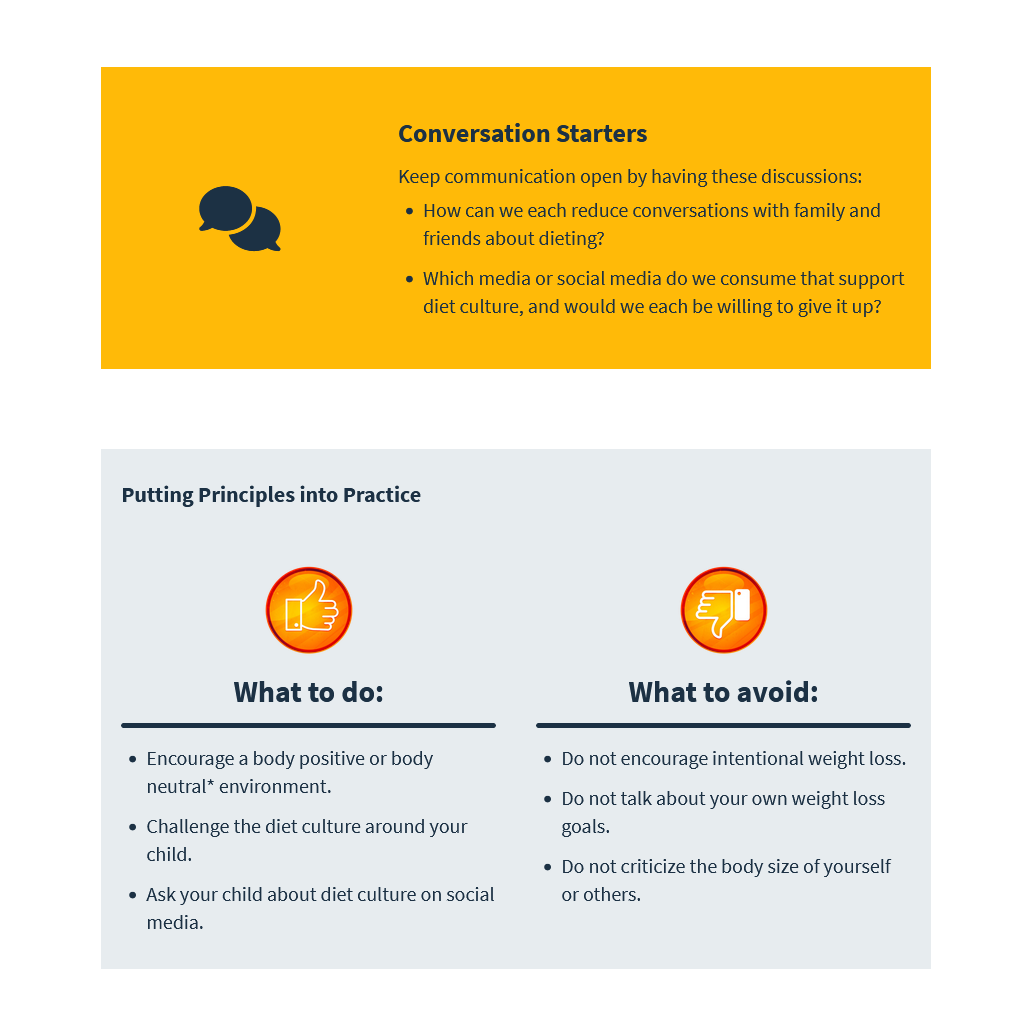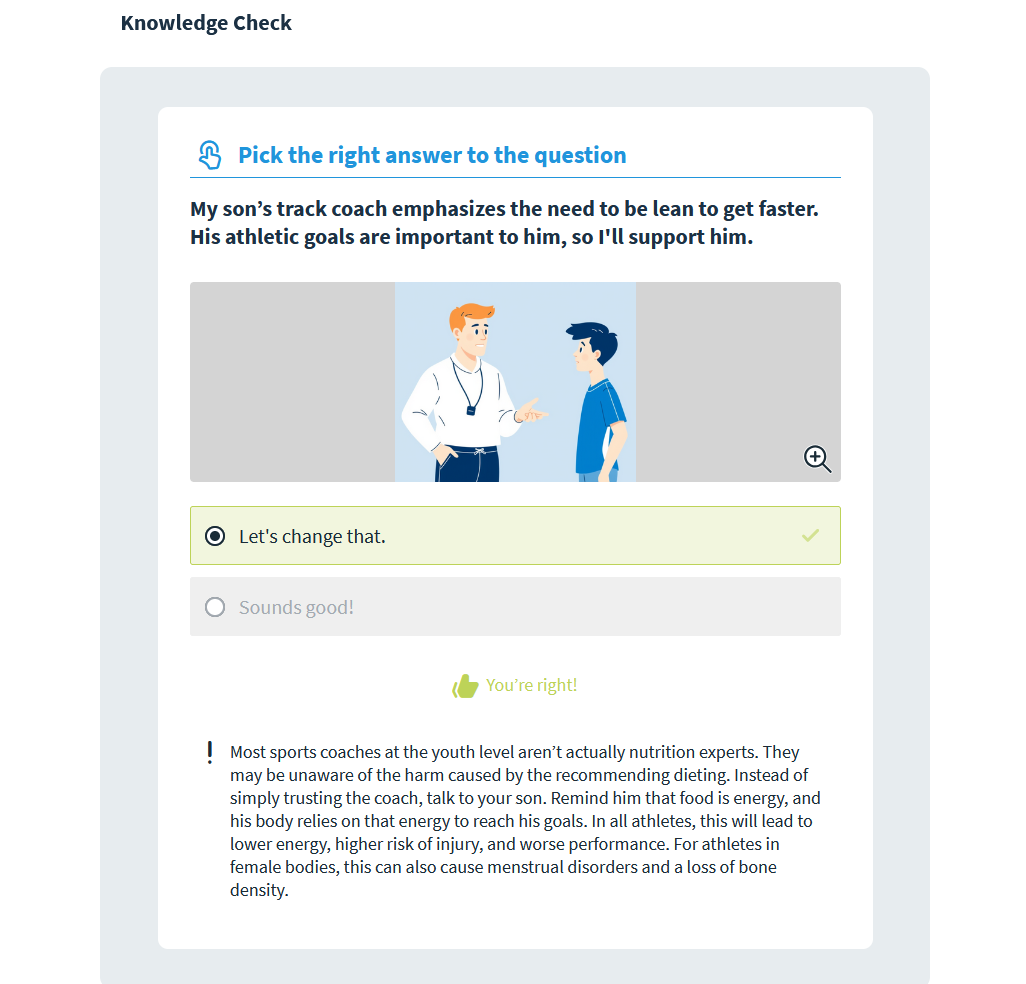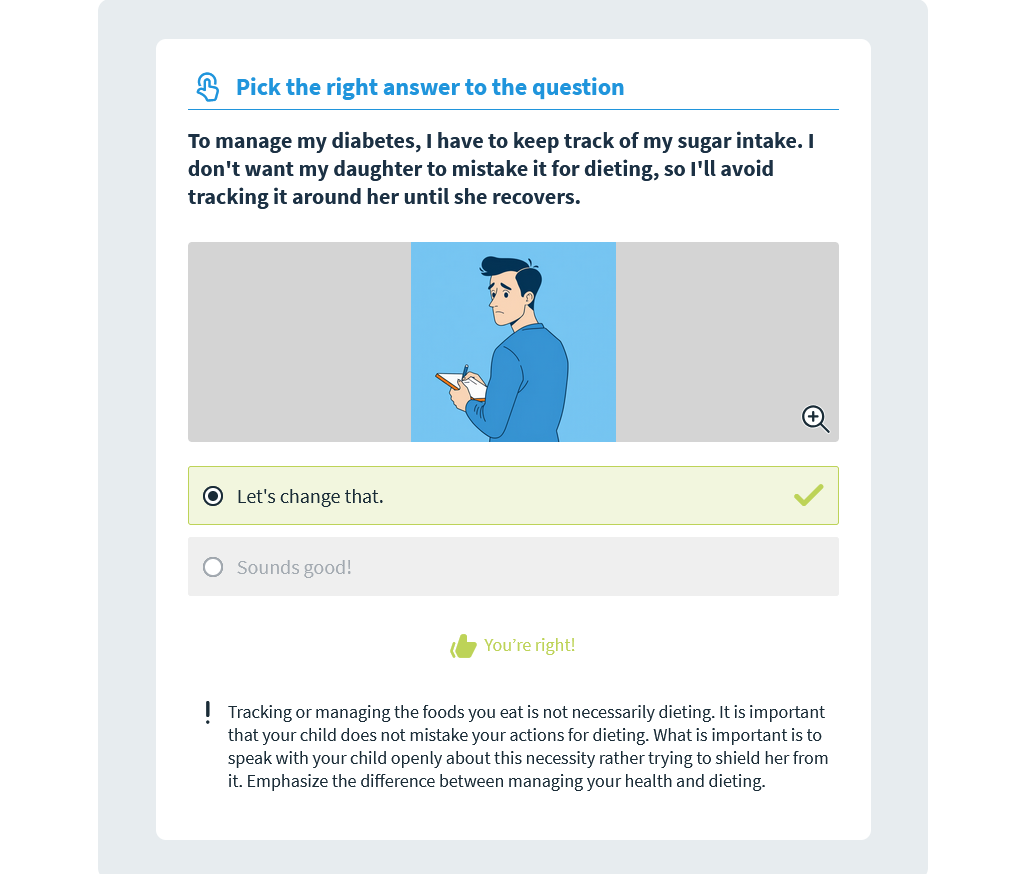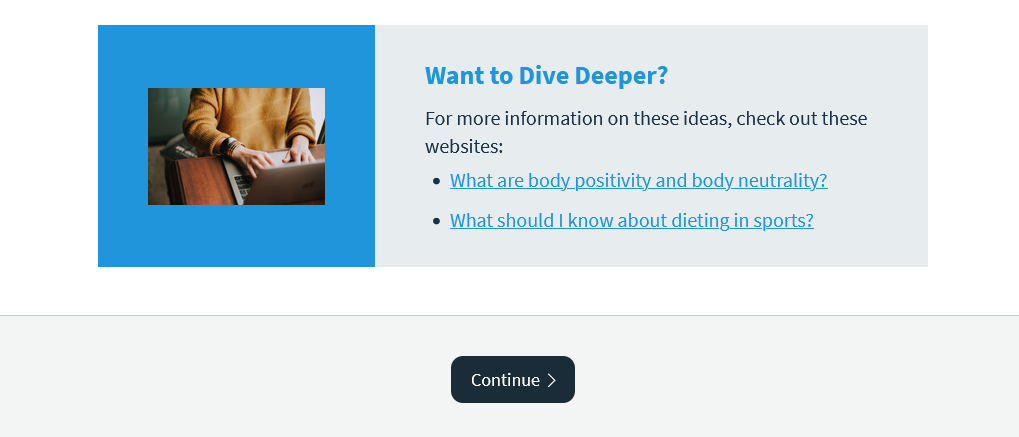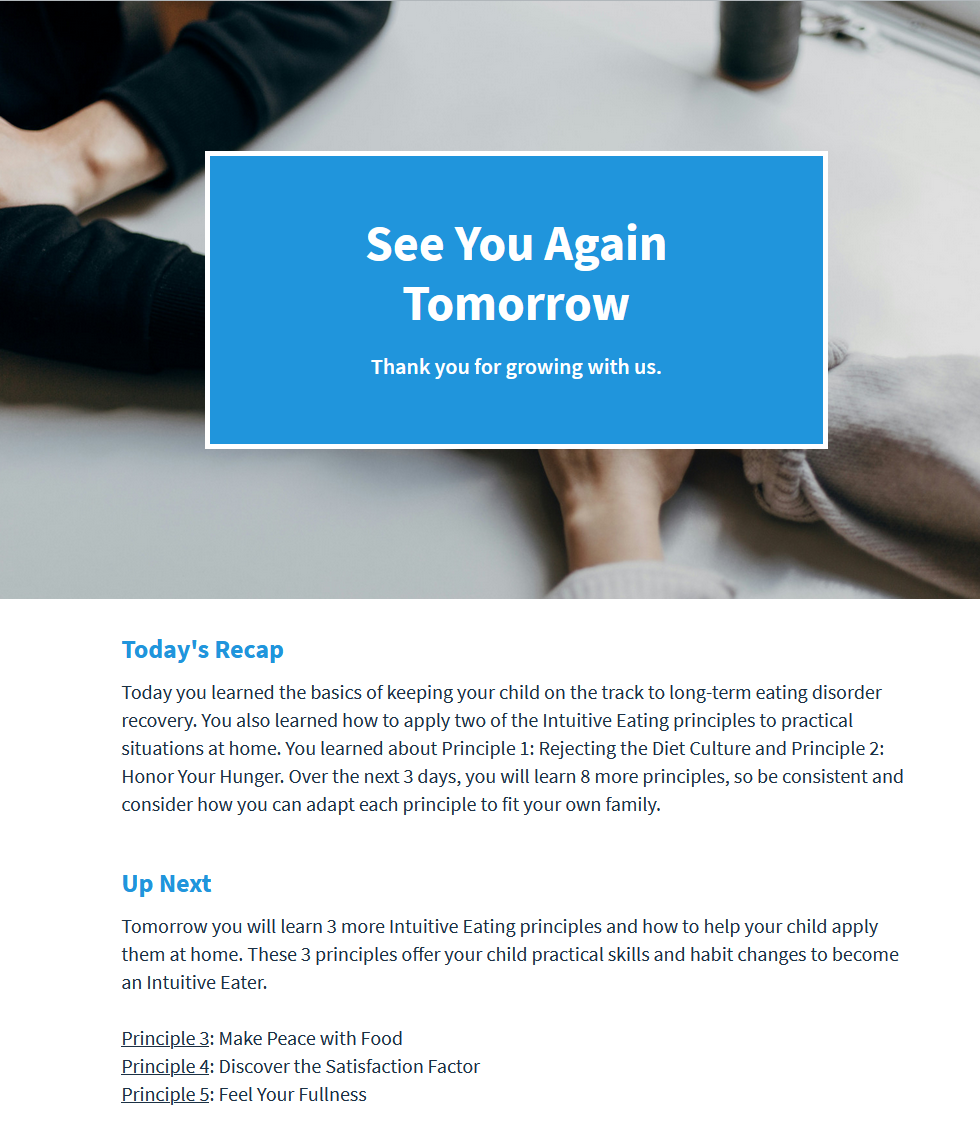Portfolio Snapshot: Health Education

Welcome to the first look at my portfolio item on health education. The full portfolio will be available soon. Until then, I have provided a sample and explanations of its background, process, and a glimpse of the final product. To gain full access to the SCORM file, please contact me via LinkedIn at https://www.linkedin.com/in/grace-rowan/.
Background
This portfolio consists of the first lesson in a series of lessons given to parents of patients at the fictional "New Day Clinic." The New Day Clinic is an in-patient eating disorder recovery center for teens and young adults. Parents of these patients are expected to complete four e-learning modules called the "Welcome Home Plan" in advance of their child's return from their in-patient treatment. The Welcome Home Plan assists parents in supporting their child through their long-term eating disorder recovery.
Training Needs Analysis
Project Overview: Welcome Home Plan
Project Description:
Provide online training to family of patients’ post-release from an in-patient eating disorder recovery program to establish a supportive home life during continued recovery.
Objectives:
Family members will be to explain the 10 principles of intuitive eating and demonstrate their application in fostering a supportive environment for patients' ongoing recovery.
Audience:
- Parents and guardians of teenagers recovering from eating disorders
- Age: approximately 40-50
- Varying levels of supportive behaviors (as reported by patient surveys)
Constraints:
- Patients must opt-in to having their parents or guardians participate in the training.
- Training must be delivered remotely in short sessions over a period of several days.
- Training should be presented in a way to encourage completion of all lessons prior to patient discharge.
Research Findings:
A problematic pattern was noted among patients who reported poor support systems within their household at the 3-month follow-up appointments. These patients were 20% more likely to have relapsed into disordered eating by their 6-month follow-up compared to those who had not reported poor support systems.
For the current process of patient discharge, parents/guardians are provided with a document briefly outlining the Intuitive Eating principles their child has been developing through the program.
Supportive an non-supportive behaviors include but are not limited to the following:
| Supportive Behaviors | Non-supportive Behaviors |
|---|---|
| Complementing the patient on aspects unrelated to body or size | Commenting on the patient's body or weight |
| Asking what the patient about their preferences for meals | Placing value judgements on foods such as "good" or "bad" |
| Respecting when patient indicates they are full or still hungry | Talking about dieting around the patient |
| Fostering a positive atmosphere during meals | Putting restrictions on what or how much the patient eats |
Storyboard
Opening Section
The opening slides of the course consist of the following:
- A title page with a brief course description
- A description of the Intuitive Eating, the core concept of the course, along with a breakdown of the content of the 4 lessons in the series
- A hotspot activity to give insight into the parent's role in their child's recovery.
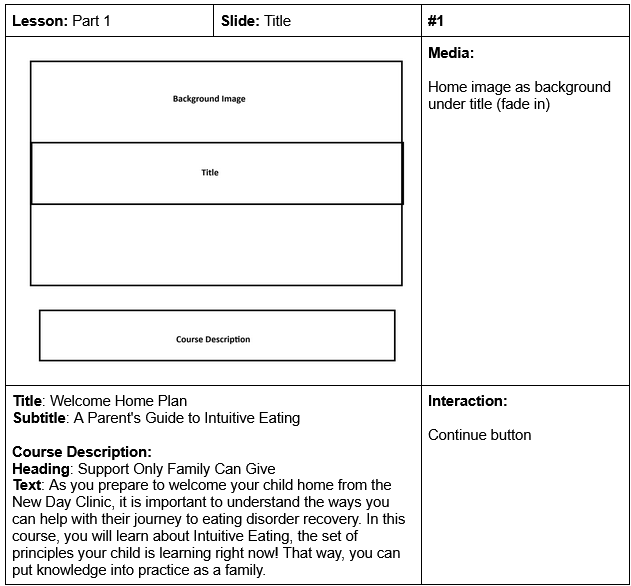
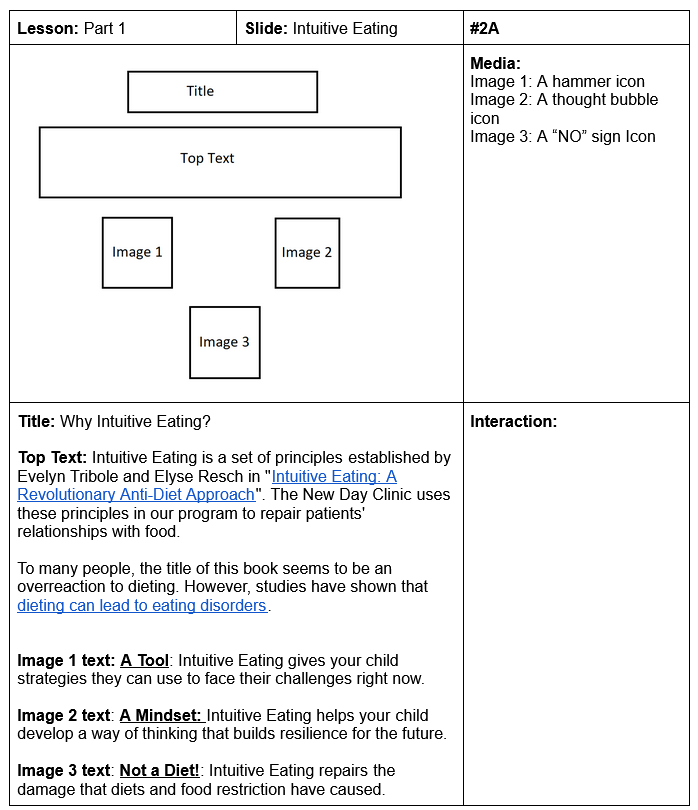
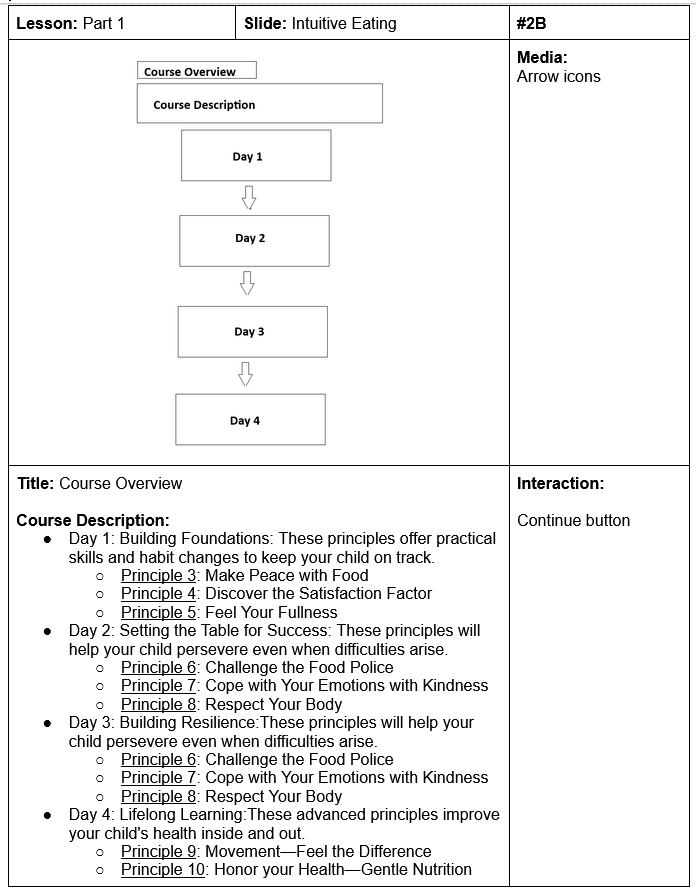
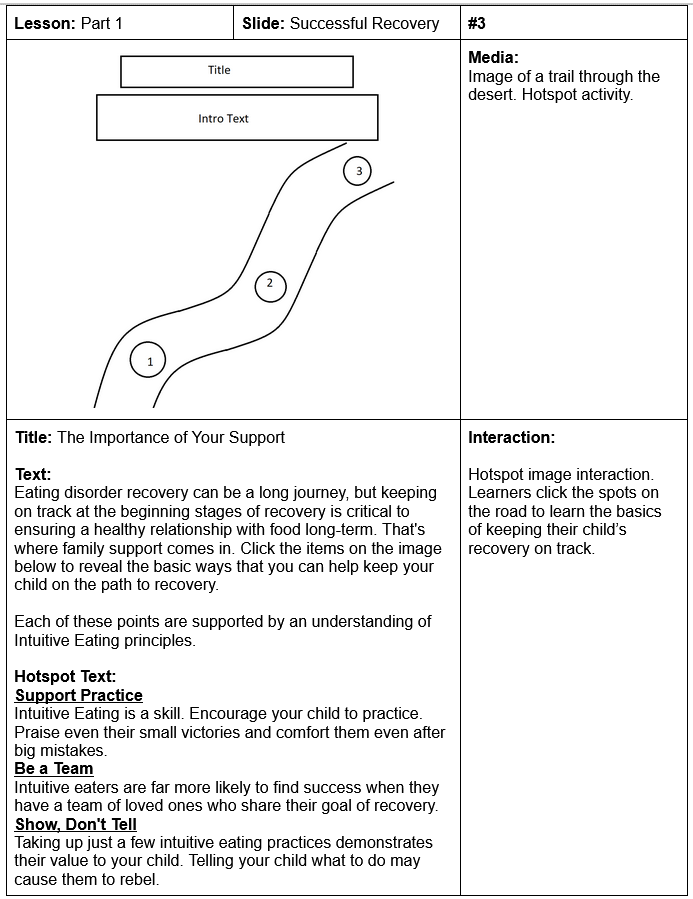
Principles Section
Each lesson in this course teach 2-3 Intuitive Eating Principles. The slides for each of these principles consist of the following:
- A description of the principle.
- Additional information on how parents can engage with their children on the principle including ways to keep communication open on the topic and behaviors that support or harm their child's ability to practice the principle.
- A quiz of 3 situation questions, asking parents to differentiate which of their behaviors could harm their child's recovery and should be altered from those which would be helpful or non-problematic.
- 2-3 links for further information in subjects discussed in this section.
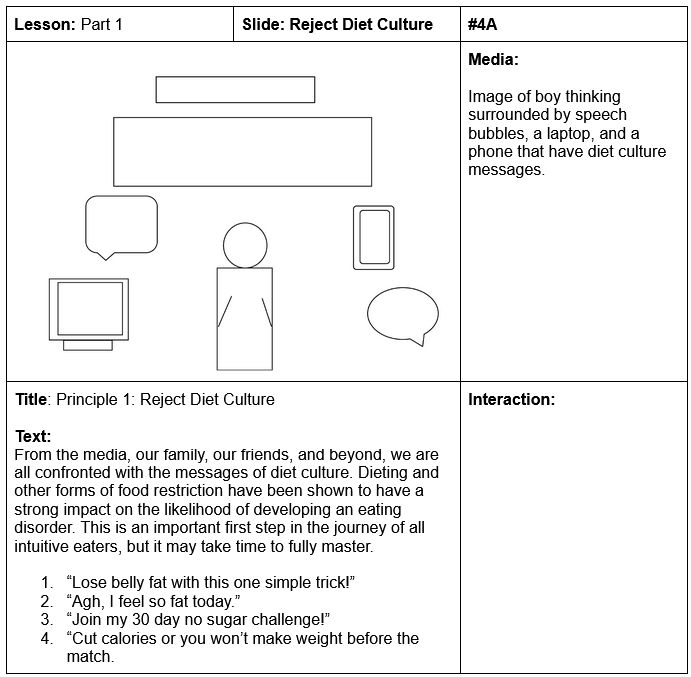
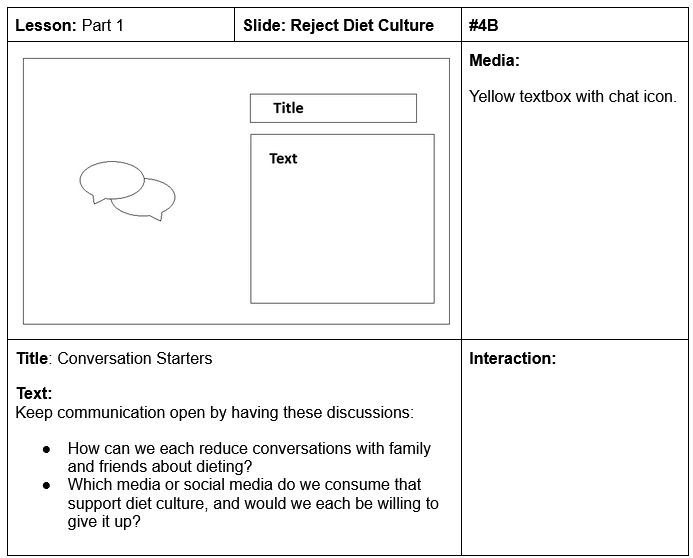
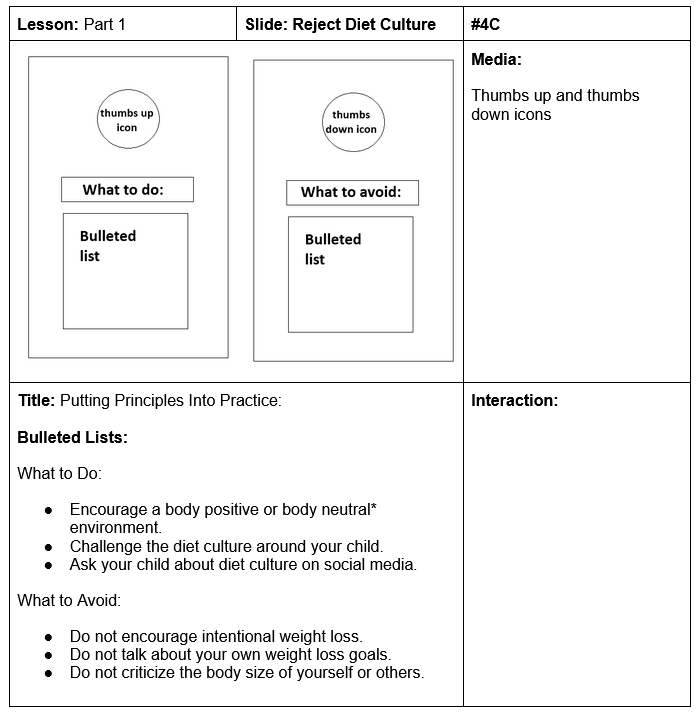

Final Course
The most recent iteration of the course was developed using Jollydeck. This was chosen for its ability to both host and develop courses, its ability to easily scale content for both web and mobile formats, its affordability, and its practicality for text-heavy content. The trade-off for these features was a more limited variety of interactive features, animations, and AI audio and images offered by Articulate 360.
Opening Section
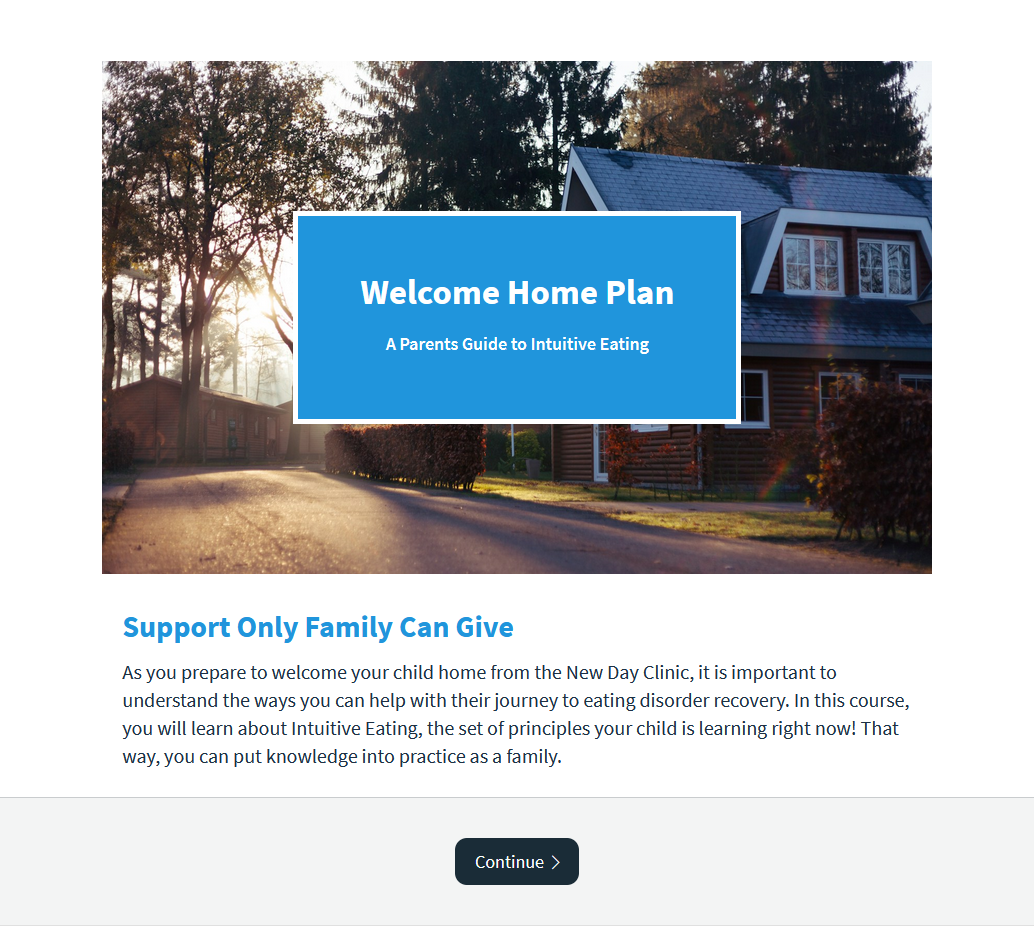
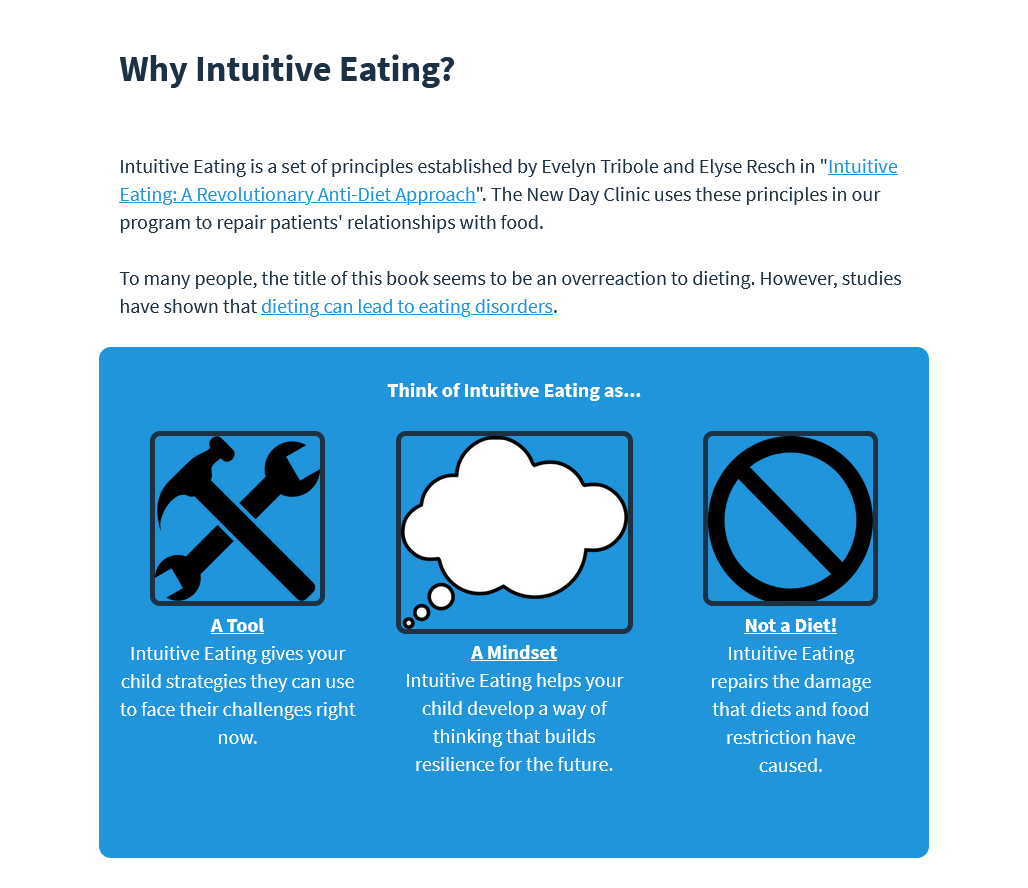
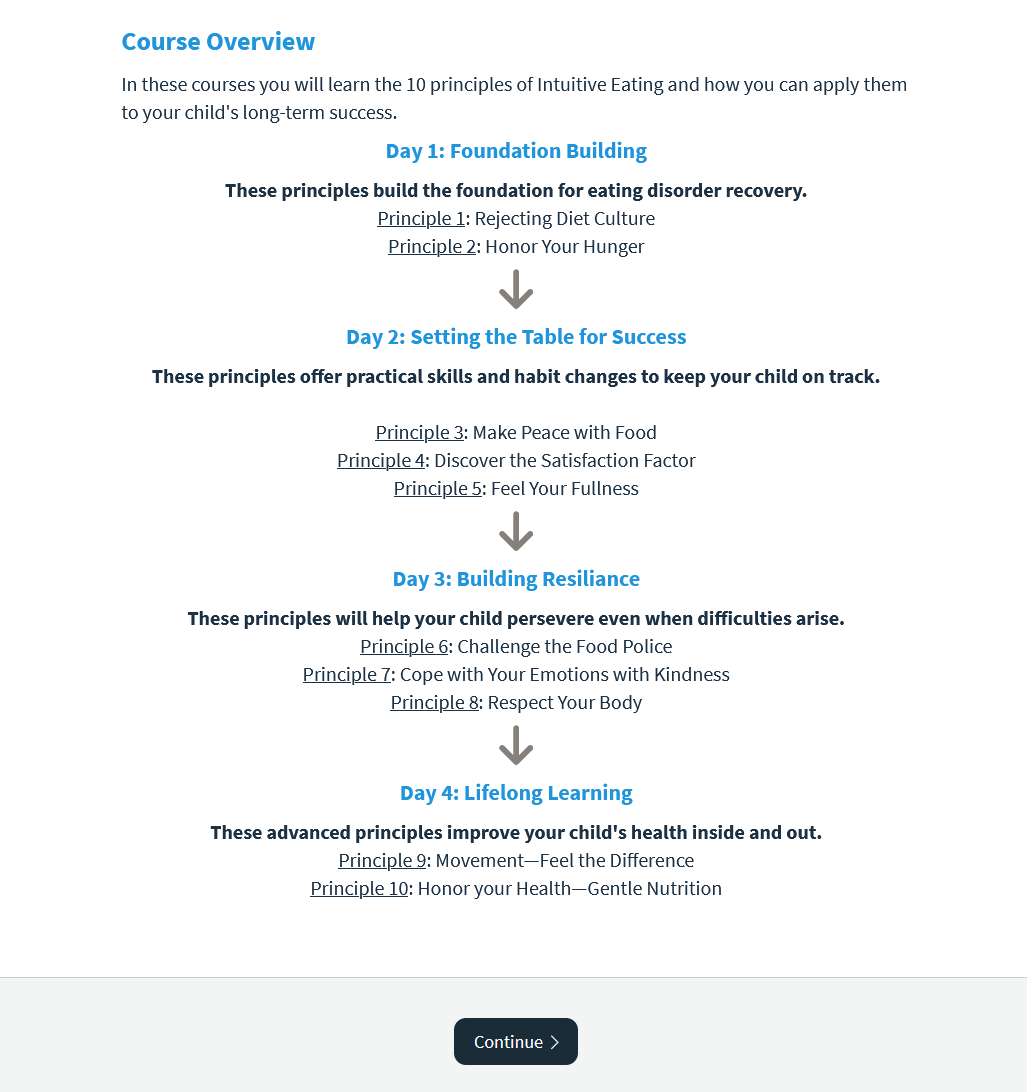
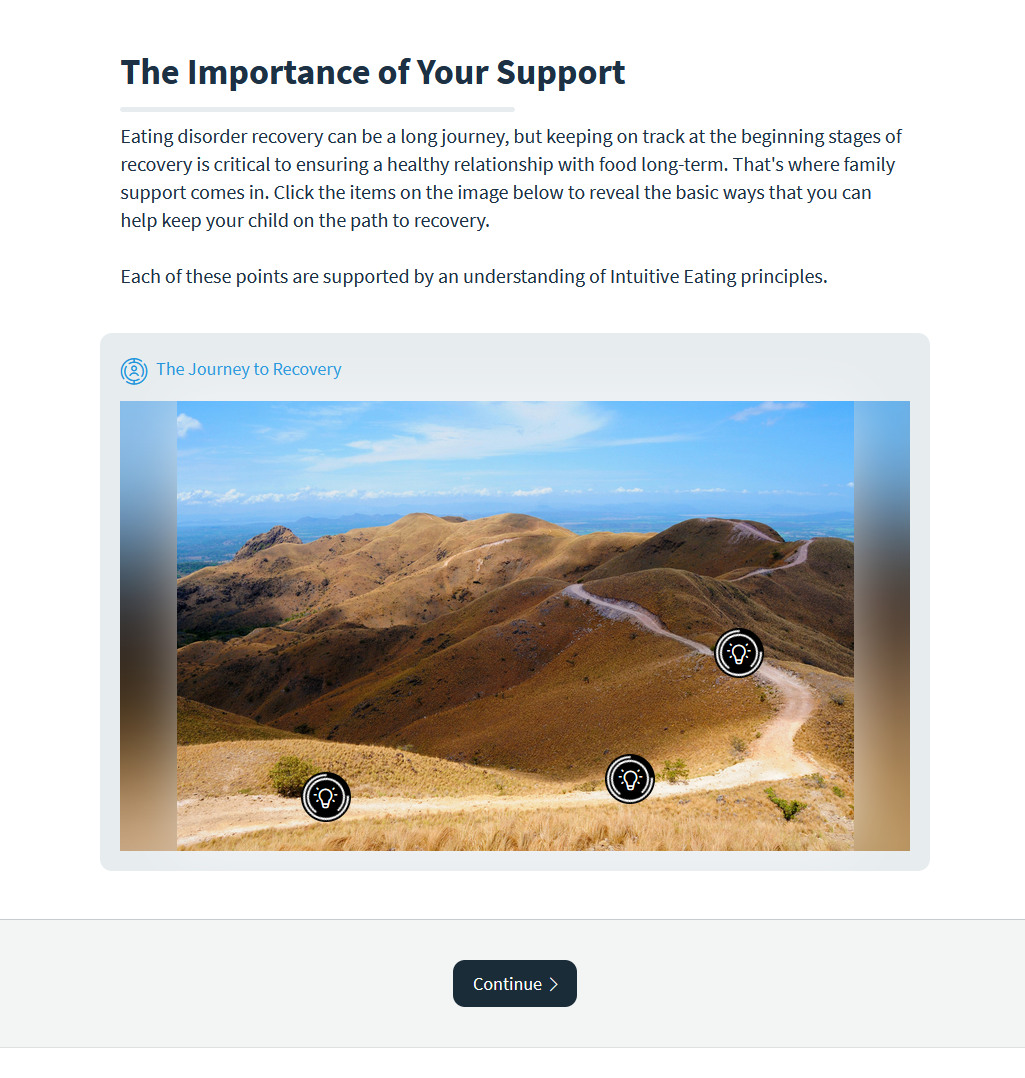
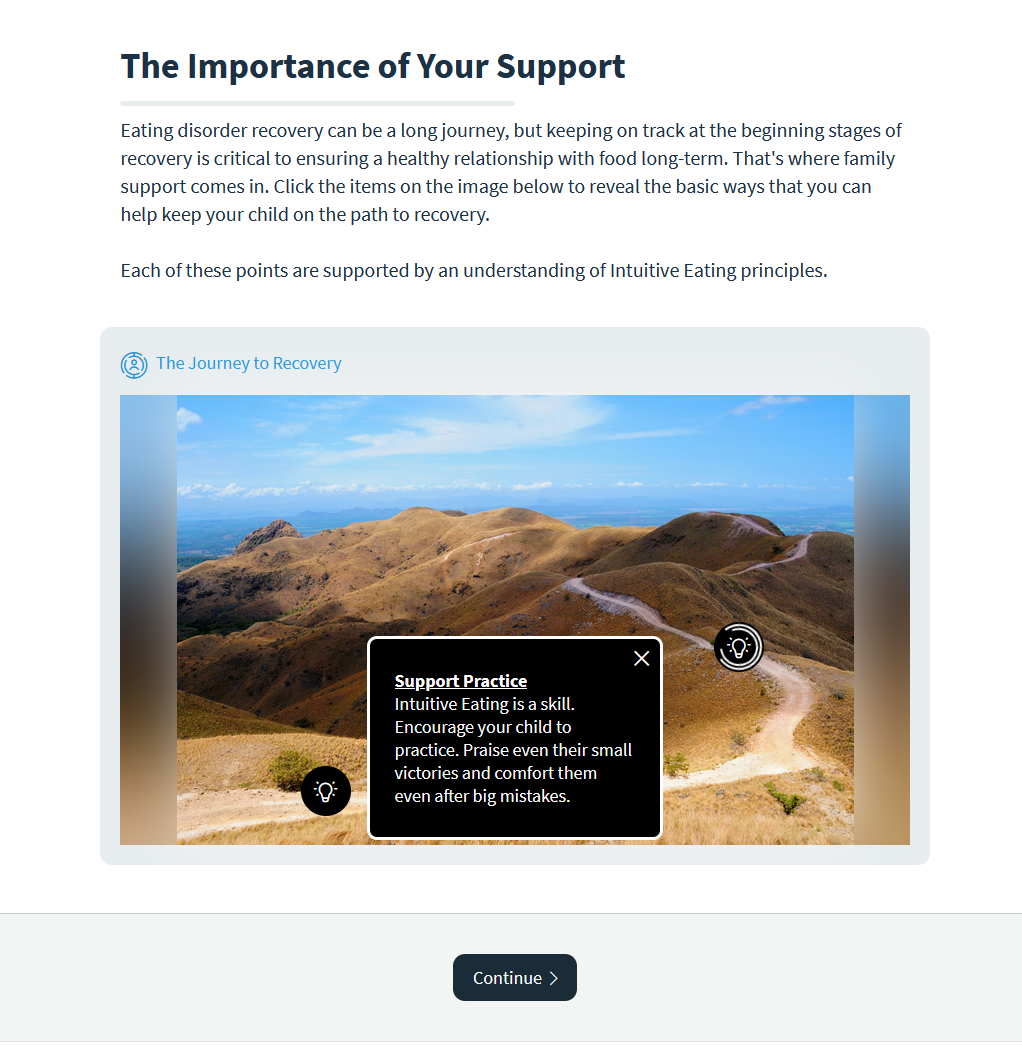
Principles Section
